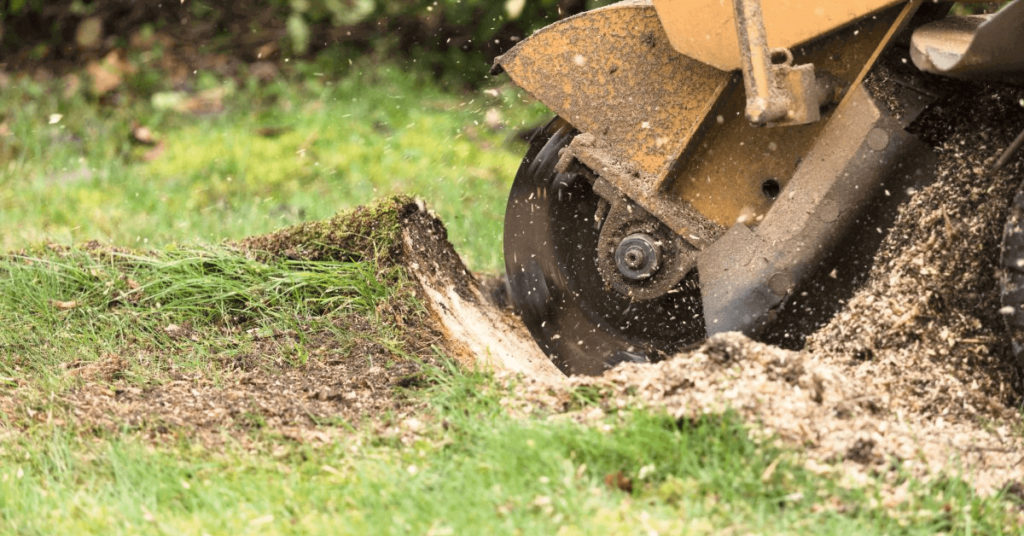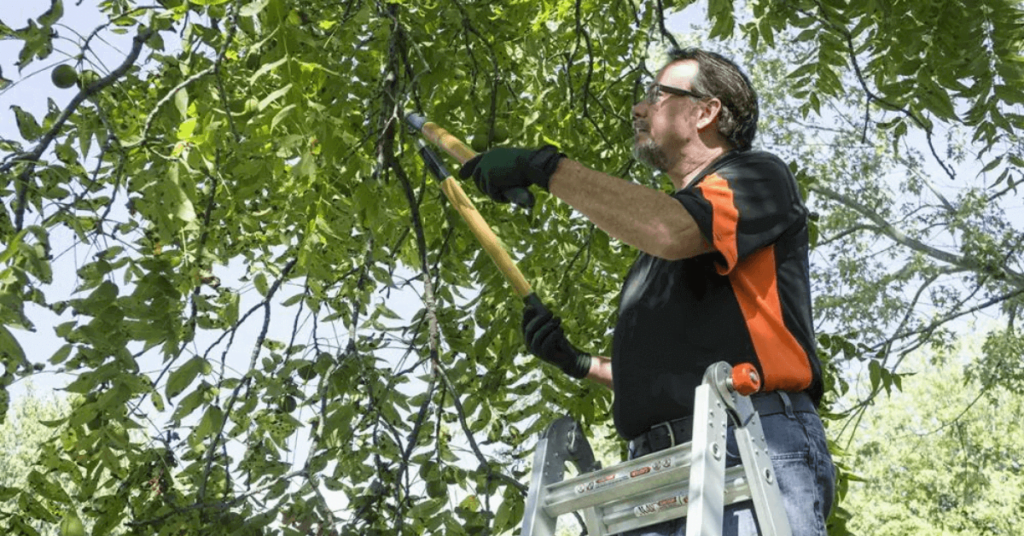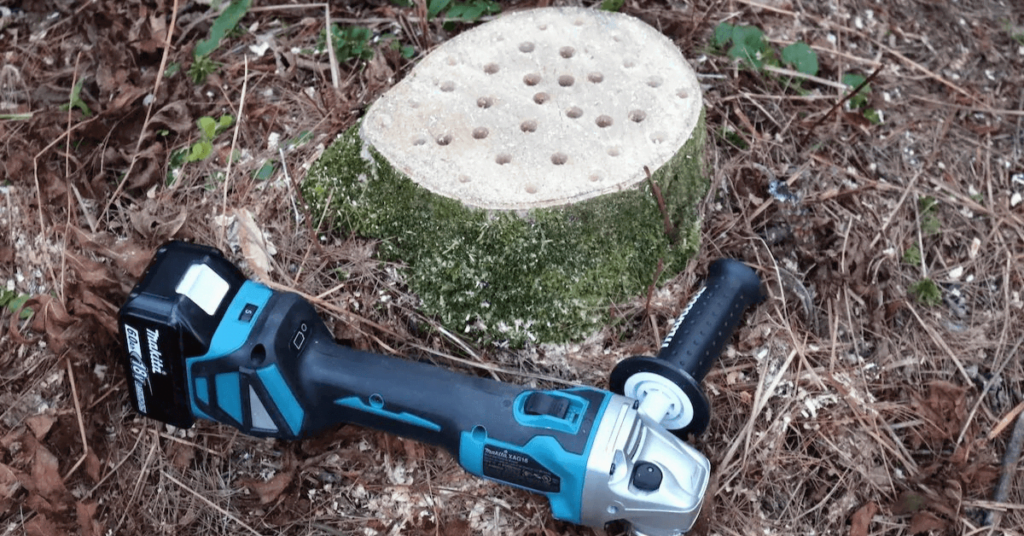Stump grinding is an effective way to eliminate unsightly tree stumps and make room for new landscaping projects. While the process itself can be straightforward, many people wonder what happens to the roots after stump grinding.
Does removing the stump cause any damage or harm them in any way? With this article, we’ll discuss what happens to roots after stump grinding and the benefits of stump grinding.
Roots After Stump Grinding
Once a tree has been stumped, its roots will remain mostly intact. They may be broken into smaller pieces or even twisted due to the grinding process but they will still be in the ground. Depending on how shallow your tree’s roots were before it was removed, you might even see them sprout and grow as though nothing had happened.
This is why it’s important to ensure the tree stump has been completely removed before replanting your new tree in the same spot. If you have any concerns about the health of the roots, you can always contact your near by tree arborist for help.
In some cases, they may be able to provide advice on how to care for the roots and help them recover.
Stump grinding and what are its benefits?
Stump grinding is the process of removing tree stumps and roots by using a stump grinder. Stump grinders are powerful machines that use rotating cutting discs to break down, grind and remove wood stumps and their root systems.
There are a few benefits of stump grinding.
- By grinding away the stump, it helps to prevent the spread of disease and reduce potential insect infestation.
- It helps to clear up space in your yard or garden area, making it more aesthetically pleasing and usable for outdoor activities.
- It eliminates trip hazards that can be caused by protruding tree stumps.
- It helps to prevent the growth of new trees and other vegetation in the same area by killing off any remaining roots from the old tree stump.
- It allows for easier replanting of a new tree or other vegetation in the same spot, as all remnants of the old stump are removed.
- The grindings can be used as mulch in other parts of the yard or garden, helping to enrich the soil and provide nutrients for other plants.
- Stump grinding is a cost-effective way to remove a tree stump, as it eliminates the need for expensive chemical treatments and manual labor.
- It helps to reduce the amount of debris that would otherwise be generated by traditional stump removal methods.
- Stump grinding is an eco-friendly option, as no chemicals are used in the process and it produces no harmful fumes.
How does stump grinding work and who can do it for me?
Stump grinding is a process that involves using a specialized machine to remove the stump of a tree from its location. The machine grinds down the stump, breaking it up into small wood chips and sawdust. This process reduces the size of the stump and makes it easier to dispose of or use for other purposes like mulch or compost.
Stump grinding can be done by a professional tree care service or an individual with the right equipment. If you do not have access to specialized machinery, several companies offer stump grinding services. The cost of the service will depend on the size of the stump and how long it takes to grind it down. Some companies may even offer discounts for larger jobs or for grinding multiple stumps at once.
What happens to the roots after stump grinding is complete and will they cause any damage to property or landscaping in the future?
The roots of the tree are usually left in place after stump grinding is complete. If they are not properly disposed of, they can regrow into a new tree or cause damage by obstructing underground pipes or wires.
To prevent this, it’s important to either remove the entire root system or grind it down as much as possible before disposing of it. Depending on the size of the tree, this could be a big job and might require professional help. However, if done correctly, there should be no danger to your property or landscaping in the future.
To protect your property from any potential damage caused by roots, you can also lay down root barriers before stump grinding is completed. These barriers are designed to prevent new roots from growing into your property and can be a great way to protect your property in the long run. It is important to note that root barriers should only be installed by professionals as improper installation could lead to more damage than it was meant to prevent.
Are there any other ways to get rid of tree stumps without having them grind away and if so, what are they and how do they work?
Yes, there are other ways to get rid of tree stumps without having them grind away. Here is a list of some alternative methods:
- Excavation: This is a method of removing tree stumps by digging them out with a shovel or spade. The depth and size of the stump will determine the amount of effort required for removal.
- Root Rotting: This involves applying an herbicide to the exposed roots or trunk of the tree, which causes them to rot away gradually. This is often done with a hand-held spade or another digging tool and can be completed in several months or even years depending on the size of the stump.
- Burning: In some cases, it’s possible to burn away a tree stump using firewood or charcoal briquettes. This should be done with caution though, as the fire can spread quickly and cause damage to nearby structures or plants.
- Chemical Treatment: This involves applying a chemical solution such as potassium nitrate to the stump in order to speed up the rotting process. This can also be used on larger stumps, but should only be done by an experienced professional.
- Natural Decomposition: One of the simplest and least expensive ways to remove a tree stump is to let nature take its course. Over time, the stump will decompose naturally and can then simply be pulled out of the ground. This process may take several years, however.
FAQs – Roots After Stump Grinding
Does stump grinding get rid of the roots?
Yes, stump grinding removes the entire root system of a tree when done properly. After a stump is ground down to below ground level, the remaining debris can then be removed and the area filled in with soil or other material.
This leaves the area looking neat and tidy without any visible stumps or roots. However, if some of the larger roots are left behind, they can be cut off with a chainsaw.
Do roots keep growing after the tree is cut down?
No, roots do not keep growing after the tree is cut down. When a tree is cut down, it dies and its root systems will no longer grow. The process of cutting down the tree disrupts the tree’s vascular system, which in turn prevents further growth from occurring in its root systems.
The root systems may continue to decompose, however and eventually, the space once occupied by these roots may be filled by new growth from other plants. This is why it is important to properly dispose of cut-down trees so that these new plants do not become overcrowded in the area.
How long does it take for roots to decompose?
The answer to this question depends on many factors, including the type of root material being decomposed, the environment it is in (moisture levels, temperature, etc.) and what kind of organisms are present to break down the matter.
Generally speaking, root decomposition can take anywhere from several weeks to a few years. Very large or dense root material may take even longer to decompose.
Final Words
After stump grinding, the roots are left in the ground to decompose. Over time, they will break down and return to the soil. This process can take a few years, depending on the size of the tree and the type of soil it was growing in.
In some cases, you may need to add nutrients to the area to help speed up the decomposition process.
If you have any questions about what happens to roots after stump grinding, feel free to give a call to professional tree service to discuss your options. They can provide advice and guidance on what to do after the job is done. With their help, your yard will be free of tree stumps in no time!



